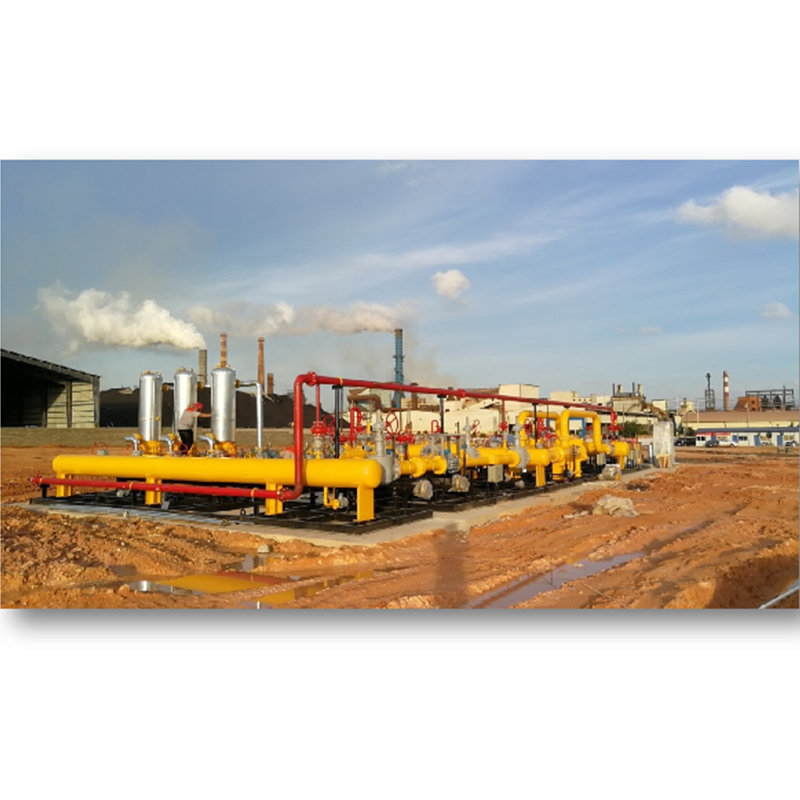
Dec . 03, 2024 14:45
Back to list
pressure vessel
Understanding Pressure Vessels Safety, Design, and Applications
Pressure vessels are crucial components in numerous industrial processes, serving as containers for gases or liquids that are subjected to high pressures. Their importance spans various fields, including chemical engineering, oil and gas, pharmaceuticals, and food production. Understanding the design, safety regulations, and applications of pressure vessels is essential for ensuring efficiency and safety in operations.
Design and Construction
The design of a pressure vessel involves a meticulous process that balances functionality and safety. Typically, a pressure vessel is constructed from materials that can withstand high pressures and temperatures, such as carbon steel, stainless steel, or specialized alloys. The choice of material is influenced by the environment in which the vessel will operate, including the type of substance contained within it and any corrosive elements it may encounter.
ASME (American Society of Mechanical Engineers) provides guidelines and standards for the design and construction of pressure vessels. These standards dictate factors such as allowable stress, minimum thickness, and the types of welds to be used, ensuring that the vessel can safely handle the pressures involved. Engineers must analyze potential failure modes, considering factors like fatigue, corrosion, and thermal stresses, to create a robust design.
Safety Regulations
Safety is paramount in the operation of pressure vessels. Given the potential hazards of storing high-pressure substances, strict regulations are in place to prevent accidents. Regular inspections, maintenance, and testing are required to monitor the integrity of pressure vessels. These can include non-destructive testing methods, such as ultrasonic or radiographic inspections, to identify any flaws or weaknesses early.
In the United States, organizations such as OSHA (Occupational Safety and Health Administration) and the NFPA (National Fire Protection Association) provide regulations that govern the use of pressure vessels. Compliance with these regulations is not only a legal obligation but also a crucial aspect of workplace safety. Employers must ensure that their operators are trained in safe handling practices and emergency procedures.
pressure vessel

Applications Across Industries
Pressure vessels are utilized in a wide range of applications. In the chemical industry, they are often used to store ammonia, chlorine, and other chemicals under high pressure. In the oil and gas sector, pressure vessels are integral to processes such as gas processing, oil refining, and storage of natural gas.
In the pharmaceutical and food industries, pressure vessels are used for autoclaving, where items are sterilized using high-pressure steam. This not only ensures product safety but also enhances shelf life and quality.
Moreover, pressure vessels are employed in energy production, particularly in nuclear power plants where they contain the reactor coolant. The integrity of these vessels is critical to the safety of the entire plant, necessitating rigorous inspection and adherence to safety protocols.
Conclusion
The significance of pressure vessels cannot be overstated. They play a vital role in various industrial applications, contributing to the efficiency and safety of operations involving high-pressure systems. As technology advances, ongoing research and development continue to improve the design and materials used in pressure vessels, further enhancing their performance and safety.
Understanding the fundamental principles behind pressure vessels not only helps engineers and operators ensure compliance with safety regulations but also fosters a culture of safety within the workplace. As industries evolve and the demand for safer, more efficient processes grows, pressure vessels will remain indispensable in our technological landscape. Properly designed, maintained, and operated, these containers will ensure the secure handling of various substances vital to modern society.
Latest news
-
Safety Valve Spring-Loaded Design Overpressure ProtectionNewsJul.25,2025
-
Precision Voltage Regulator AC5 Accuracy Grade PerformanceNewsJul.25,2025
-
Natural Gas Pressure Regulating Skid Industrial Pipeline ApplicationsNewsJul.25,2025
-
Natural Gas Filter Stainless Steel Mesh Element DesignNewsJul.25,2025
-
Gas Pressure Regulator Valve Direct-Acting Spring-Loaded DesignNewsJul.25,2025
-
Decompression Equipment Multi-Stage Heat Exchange System DesignNewsJul.25,2025

